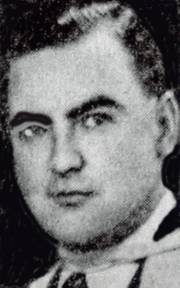
South Australian Medical Heritage Society Inc
Website for the Virtual Museum
Home
Coming meetings
Past meetings
About the Society
Main Galleries
Medicine
Surgery
Anaesthesia
X-rays
Hospitals,other organisations
Individuals of note
Small Galleries
Ethnic medicine
- Aboriginal
- Chinese
- Mediterran
Charles Spencer Swan
DSc, MD(Adel), MCPA, DOMS, FRCP(Lond), FRCS(Eng).

Dr Swann graduated in Medicine from the University of Adelaide in 1935.
His secondary education was at Scotch College , where he was school captain in 1929, and he continued to maintain his liaison with his alma mater as president of the Old Collegians Association.
Shortly after completing his internship years, he joined the South Australian Institute of Medical and Veterinary Science as a research assistant.
He had the rare distinction of having received two doctorates from the University. His first doctorate was in Science (D.Sc.) and his second in Medicine (M.D.)
His major contribution to Medicine was a paper in the Medical Journal of Australia in September 1943. This was the result of an NHMRC grant where he was the chief investigator. The brief was to confirm the findings of Sir Norman Gregg, who in 1941 reported 78 cases of cataracts in newborns whose mothers had developed Rubella during the early months of pregnancy. He set out to determine that
- The disease during pregnancy was Rubella.
- The precise period during which the defects occurred.
- The range of defects.
- Whether any other infectious disease could lead to similar defects.
In his endeavours he was strongly supported by Adelaide Ophthalmologists Drs. Tostevin, Moore, Mayo, and Barham Black. In addition he documented other defects including cardiac defects, microcephaly, and deaf mutism.
His other publications address bacterial and virus infections, involving Mumps, Encephalitis and six further publications on Rubella. He was also interested in intracranial tumours Medulloblastoma in particular.
In 1947 he spent two years in London at the University of London Ophthalmic Institution and the Royal London Ophthalmic Hospital and gained degrees in eye medicine and eye surgery. On his return to Adelaide he became Honorary Ophthalmologist at both the RAH and the then ACH.
At the age of 51 he suffered a series of heart attacks and died.
-o0o-